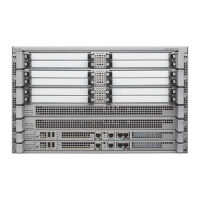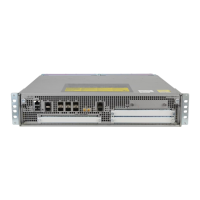20-9
Cisco ASR 1000 Series Aggregation Services Routers SIP and SPA Software Configuration Guide
OL-14127-08
Chapter 20 Troubleshooting the Serial SPAs
Performing Basic Interface Troubleshooting
Serial Lines: Increasing Input Errors in Excess of 1 Percent of Total Interface
Traffic
If input errors appear in the show interfaces serial command output, there are several possible sources
of those errors. The most likely sources, along with possible solutions, are summarized in
Table 20-4.
Note Any input error value for cyclic redundancy check (CRC) errors, framing errors, or aborts above 1
percent of the total interface traffic suggests some kind of link problem that should be isolated and
repaired.
Ta b l e 20-3 Serial Lines: Increasing Input Drops on Serial Link
Possible Problem Solution
Input rate exceeds
the capacity of the
router, or input
queues exceed the
size of output
queues
Note Input drop problems are typically seen when traffic is being routed
between faster interfaces (such as Ethernet, Token Ring, and Fiber
Distributed Data Interface [FDDI]) and serial interfaces. When traffic is
light, there is no problem. As traffic rates increase, backups start
occurring. Routers drop packets during these congested periods.
1. Increase the output queue size on common destination interfaces for the
interface that is dropping packets. Use the hold-queue number out interface
configuration command. Increase these queues by small increments (for
instance, 25 percent) until you no longer see drops in the show interfaces
command output. The default output hold queue limit is 40 packets.
2. Reduce the input queue size, using the hold-queue number in interface
configuration command, to force input drops to become output drops. Output
drops have less impact on the performance of the router than do input drops.
The default input hold queue is 75 packets.

